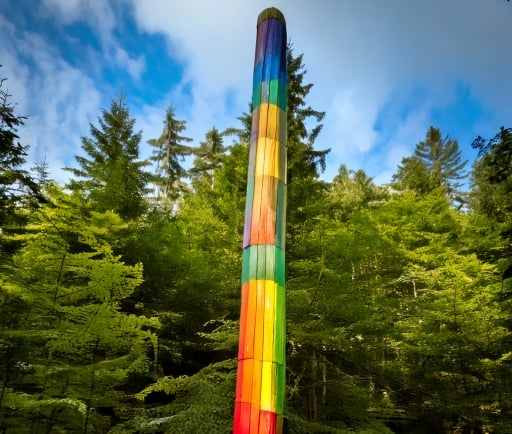The Rainbow Eucalyptus Tree: Nature’s Living Canvas


Introduction to the Rainbow Eucalyptus
The rainbow eucalyptus tree, known scientifically as Eucalyptus deglupta, is a remarkable species that captures the imagination of all who encounter it. Native to the lush rainforests of the northern hemisphere, this unique tree displays strikingly colorful bark that peels away in strips, revealing an underlying layer with shades of green, blue, purple, orange, and maroon. Such vibrant hues not only contribute to its aesthetic appeal but also serve as a testament to the tree's ability to thrive in its natural habitat.
Habitat and Growth Conditions
Rainbow eucalyptus trees typically flourish in regions ranging from sea level to altitudes of approximately 1,800 meters. They are predominantly found in tropical and subtropical climates, where moisture-laden air nourishes their growth. The ideal environment for these trees consists of gentle rainfall and a consistent warm temperature, enabling them to develop their characteristic multicolored bark.
Their natural habitat, frequently found in northern hemisphere rainforests, not only provides the necessary moisture but also offers protection from extreme weather conditions. These trees are often located in humid areas where the soil is rich and fertile, benefiting from the organic matter that rainforests frequently provide. As they mature, rainbow eucalyptus trees can reach impressive heights, often exceeding 75 feet, creating a fascinating spectacle in their vibrant ecosystem.
Significance and Uses
The rainbow eucalyptus tree is not simply admired for its beauty; it also plays a vital role in its ecosystem. These trees provide shade, shelter, and food for various bird species and insects, promoting biodiversity in their natural habitats. Moreover, the unique characteristics of rainbow eucalyptus wood make it a popular choice for various commercial purposes, such as furniture and crafts. It is celebrated not only for its physical properties but also for its striking visual appeal, which is sought after in landscape design and ornamental gardening.
Conservationists emphasize the importance of preserving the habitats of rainbow eucalyptus trees due to their ecological significance. As urbanization and climate change threaten their natural environments, efforts to protect and sustain these vibrant trees are becoming increasingly crucial. Educating the public about the beauty and ecological contributions of the rainbow eucalyptus can pave the way for greater awareness and preservation efforts.
Conclusion
The rainbow eucalyptus tree stands as a stunning example of nature's artistry, thriving in the vibrant ecosystems of the northern hemisphere's rainforests. Its colorful bark, coupled with its ecological importance, makes it a tree worth preserving and appreciating. As we continue to admire this unique species, let us also champion the causes that protect its habitat, ensuring that future generations can experience the beauty of these living canvases.
